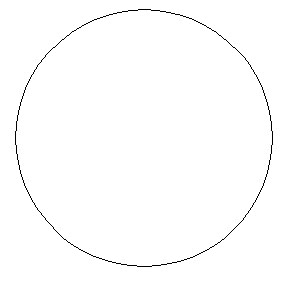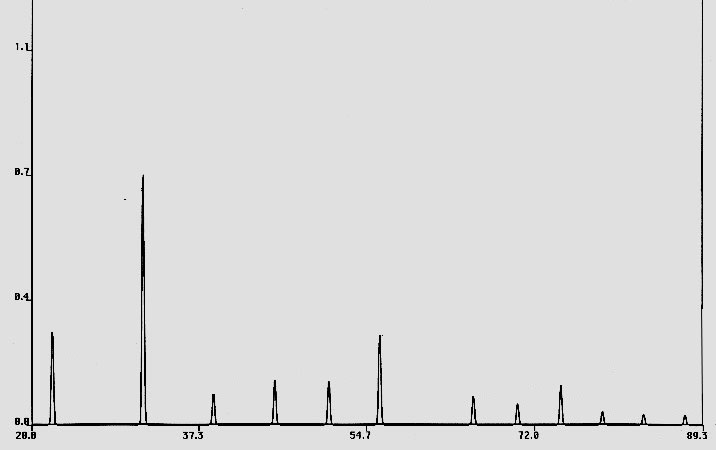
SS#________________________________
Grade____________________/10
MatSE 430 - Homework # 2 - Due 9/7/00
The Powder Diffractometer and Indexing Patterns
1. Visit the Picker powder diffractometer in 304 Steidle. There are four green Picker diffractometers in the lab; three are single crystal four-circle units and one is a powder diffractometer. Figure out which is the powder diffractometer and identify the following slits and show their positions on the diffractometer circle below: two Soller slits, divergence slit, and receiving slit. Also find and similarly represent below the sample holder, the x-ray tube, and the counter, and where you would place a diffracted beam monochromator (the Picker diffractometer may not have one of these mounted at this time). On the same diagram, very carefully draw a focusing circle (deductions will be made if this circle isn't shown to go exactly through the right parts of the diffractometer in the correct manner). Finally, show on this diagram where the takeoff angle is measured.
If the big red x-ray on warning light is on, do not try to open the radiation protection cabinet and crawl inside.

2. The particles in a powder of a certain NaCl sample are rather perfect
cubes whose faces have <100> normals. A diffractometer sample is made
by placing a very thin layer (say, one particle thick) on a glass slide.
Draw the CuK![]() diffractometer pattern below for 2
diffractometer pattern below for 2![]() = 30° to 150°. You will
need to know the Bravais lattice and lattice parameter(s). Show your calculations
and explain why the pattern has this appearance.
= 30° to 150°. You will
need to know the Bravais lattice and lattice parameter(s). Show your calculations
and explain why the pattern has this appearance.
3. Determine the crystal and counter settings (angles) for a graphite
monochromator set to select CuK![]() radiation.
radiation.
4. Index the powder pattern below (CuK![]() radiation) and determine:
radiation) and determine:
lattice centering type________________
lattice parameter(s)_________________
identity of substance_________________
